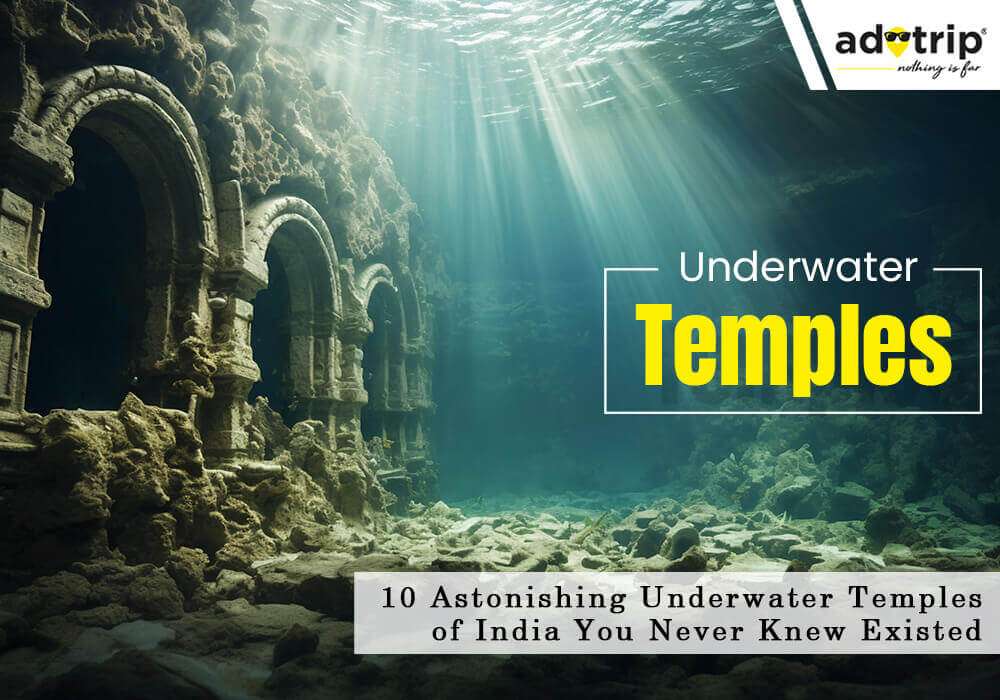
Last Updated At: 26-Dec-2024
10 Astonishing Underwater Temples of India - Must Visit in 2025
Underwater temples are not a common sight, yet India boasts several fascinating underwater temples that stand out as unique and mysterious landmarks, waiting to be explored. Hidden beneath the waters of ancient lakes and rivers, these submerged temples hold secrets that connect India’s past with its present. These underwater landmarks are more than just relics; they’re hidden gems offering rare glimpses of the country’s architectural ingenuity and spiritual legacy.
Are you ready to dive into mystery? Here are the 10 most astonishing underwater temples of India. Each one on the list might catch you off guard!
10 Famous Underwater Temples of India You Must Visit in 2025
1. The Sunken Temple of the City of Dwarka, Gujarat
One of the most famous underwater temples in India is located in Dwarka, Gujarat. According to legend, this ancient city was the kingdom of Lord Krishna. The city, once considered a mythical place was said to have sunk into the Arabian Sea after Krishna's departure. However, archaeological findings have revealed ruins of a city beneath the water, confirming that a once-thriving civilisation might have existed in the area.
The submerged temples of Dwarka are often considered one of the oldest underwater sites in India. Divers and marine archaeologists have found remnants of temples, walls, and even sculptures submerged beneath the sea.
This discovery has raised interesting questions about the location's historical importance and many believe that the underwater temples of Dwarka are proof of the legend of Krishna’s lost kingdom.
Key Features of Dwarka Underwater Temples
- The ruins are believed to date back more than 5,000 years.
- The temple’s submerged location has attracted both scholars and spiritual seekers alike.
- The discovery of intricate carvings and statues shows the high level of craftsmanship of the time.
The Somnath Temple, Gujarat
The Somnath Temple, located in Prabhas Patan near Veraval in Gujarat is one of the most revered pilgrimage sites in India. Known for its strong association with Lord Shiva, the temple has faced destruction and reconstruction several times throughout history. Some accounts suggest that the temple was partially submerged due to rising sea levels, especially after the devastating floods and invasions during ancient times.
The temple was originally built near the sea and parts of it are believed to have sunk underwater, though the temple is still one of India’s most significant pilgrimage destinations. Marine archaeologists in India have speculated that the submerged parts of the Somnath Temple could reveal more about the ancient architecture and traditions.
Key Features of Somnath Temple’s History
- It is one of the twelve Jyotirlingas of Lord Shiva.
- The temple has been rebuilt multiple times over the centuries.
- The temple continues to attract millions of devotees every year.
Nishkalank Mahadev Temple, Bhavnagar, Gujarat
The Nishkalank Mahadev Temple near Bhavnagar, Gujarat is a rare temple dedicated to Lord Shiva that appears only at low tide. It is located on a small island off the coast and for much of the day, it remains submerged by the sea.
Legend says the Pandavas built this temple after the Mahabharata war as a mark of their repentance. When the tide goes out, visitors can walk to the temple which has five Shiva lingas representing the Pandavas and a Nandi facing them, offering a one-of-a-kind pilgrimage experience.
Key Features of Nishkalank Mahadev Temple
- Only accessible during low tide when the sea recedes.
- Built by the Pandavas as a mark of repentance.
- Contains five Shiva lingas, each representing a Pandava.
The Underwater Temple of Kashi Vishwanath
Located in Varanasi, the Kashi Vishwanath Temple is one of the holiest and most famous temples in India. However, there is a little-known fact about a submerged shrine associated with this temple. Some believe that beneath the surface of the Ganges River lies a submerged Kashi Vishwanath temple which is thought to have been submerged during the course of time due to the rising waters of the river.
Historically, the temple has been built, destroyed, and rebuilt multiple times. The original temple was said to have been located along the river and with the changing course of the river as well as rising water levels, parts of the temple may have sunk.
Key Features of Kashi Vishwanath’s Sunken Temple
- The temple is one of the 12 Jyotirlingas of Lord Shiva.
- The submerged shrine is a focal point of local legends and beliefs.
- Pilgrims continue to flock to the banks of the Ganges, seeking blessings and solace.
Read More : New Vishwanath Temple, BHU
Ratneshwar Mahadev Temple, Varanasi
Located near the Manikarnika Ghat in Varanasi, the Ratneshwar Mahadev Temple is an intriguing shrine known for its distinctive tilt. Also called Kashi Karvat (meaning “leaning temple of Kashi”), this temple remains partially submerged in the Ganges for much of the year due to its location close to the riverbank.
The tilted structure has mystified locals and visitors with legends suggesting it may have been constructed to lean intentionally. Despite being submerged at times, the temple attracts devotees who visit to experience its unique architecture and connection to Varanasi’s spiritual heritage.
Key Features of Ratneshwar Mahadev Temple
- Known as Kashi Karvat, or the “leaning temple of Kashi.”
- Remains underwater for most of the year.
- A unique architectural wonder in the heart of Varanasi.
The Mahabalipuram Temples, Tamil Nadu
Located on the coast of Tamil Nadu, Mahabalipuram is famous for its rock-cut temples and intricate sculptures. Among its many architectural wonders, Mahabalipuram is also home to submerged temples and shrines that are partially submerged in the Bay of Bengal. Dating back to the 7th century, these temples were once part of the great port city of Mamallapuram.
The submerged temples of Mahabalipuram were discovered when the water levels of the Bay of Bengal receded, revealing ruins and sculptures that had been hidden for centuries. Marine archaeology teams have reported seeing a range of artefacts, including stone pillars, idols of gods, and even entire temples.
Key Features of Mahabalipuram’s Underwater Temples
- The temples of Mahabalipuram are examples of Dravidian architecture.
- The submerged shrines serve as a testament to the region’s maritime history.
- These temples were once used for religious rituals and community gatherings.
The Underwater Temples of Poompuhar, Tamil Nadu
Poompuhar, located in Tamil Nadu, is another ancient city believed to have been swallowed by the sea. Once a bustling port city, it is now famous for its submerged temples and artefacts found in the waters of the Bay of Bengal. According to ancient texts and local folklore, the city was destroyed due to floods and much of its architecture, including temples has been lost to the sea.
Marine archaeological expeditions have uncovered several structures and relics submerged in the waters off Poompuhar. These include remains of India underwater heritage sites, ancient temples, walls, and statues, offering insight into the city’s glorious past.
Key Features of Poompuhar’s Underwater Temples
- Poompuhar was a major centre of trade and culture during the Sangam period.
- The submerged temples provide evidence of a once-thriving city that was rich in culture and religion.
- Some structures date back to over 2,000 years ago.
Murudeshwar Lord Shiva Temple, Karnataka
The Murudeshwar Temple in Bhatkal taluk of Uttara Kannada District, Karnataka is a grand Shiva temple that overlooks the Arabian Sea. Known for its towering statue of Lord Shiva, the temple draws visitors for its scenic location and spiritual significance.
This temple complex is surrounded by the sea on three sides and has a 20-story gopuram which is one of the tallest Shiva statues in the world.
Key Features of Murudeshwar Temple
- Known for its massive, iconic Shiva statue.
- Surrounded by the sea on three sides, offering panoramic views.
- Features a 20-story gopuram that visitors can climb for breathtaking vistas.
Read More : Places To Visit In Murudeshwar 2025
Varanga Jain Temple, Udupi, Karnataka
The Varanga Jain Temple, also known as Kere Basadi or the Lake Temple is a 1,000-year-old shrine located in Udupi district, Karnataka. This temple is situated on a serene lake giving it the appearance of floating on water. It is one of the few Jain temples of its kind and provides a tranquil experience for visitors.
The temple is accessible only by boat, adding to its unique charm. The calm waters and lush surroundings make the Varanga Jain Temple a peaceful and picturesque spiritual site.
Key Features of Varanga Jain Temple
- Known as Kere Basadi or the Lake Temple.
- Accessible only by boat, creating a floating appearance.
- A serene and peaceful site, perfect for reflection and worship.
The Lost Temples of Kurukshetra, Haryana
The Lost Temples of Kurukshetra are believed to be ancient structures submerged under the Saraswati River, a river mentioned in Vedic texts and long considered sacred. These submerged temples are thought to be remnants of an era when Kurukshetra was a thriving centre of Vedic rituals and learning.
Legends say that these temples were connected to sages and warriors who sought blessings before battles. While these temples remain hidden underwater, efforts are underway to explore and understand their connection to India’s ancient heritage.
Key Features of the Lost Temples of Kurukshetra
- Associated with the Vedic era and the Mahabharata period.
- Thought to be submerged under the Saraswati River.
- Believed to be spiritual sites used by sages and warriors of ancient times.
The Mystery of the Underwater Temples: What Lies Beneath?
The underwater temples of India continue to baffle archaeologists, historians, and spiritual enthusiasts. Many of these temples remain submerged because of natural disasters, human activity, and rising sea levels over centuries. Their discovery raises important questions about the resilience of ancient cultures and the impact of natural forces on human settlements.
What makes these submerged temples so fascinating is the mystery that surrounds them. These underwater sites are not just of historical importance but they are also spiritual landmarks, drawing thousands of people who believe in their mystical powers.
Ready to Explore India’s Astonishing Underwater Temples? Let Adotrip Craft Your Journey
Dreaming of exploring these breathtaking underwater temples and uncovering India’s hidden marvels? Let us make your dream journey effortless with expertly curated travel packages and unbeatable deals. From seamless travel arrangements to personalised itineraries, we’ll handle every detail so you can focus on experiencing the magic of these hidden gems.
Make Your Travel Goals a Reality
Get in touch with us today to start planning your unforgettable trip. With Adotrip, the extraordinary is just a call away.
With us, nothing is far!
--- Published By Adotrip
Latest Blogs

One Day Picnic Spot Near Vadodara - Nature, Heritage & Adven...

One Day Picnic Spot Near Panvel - Relax, Explore & Refresh

One Day Picnic Spot Near Nashik – Lakes, Hills & Heritage

One Day Picnic Spot Near Karjat – Nature, Adventure & Weeken...
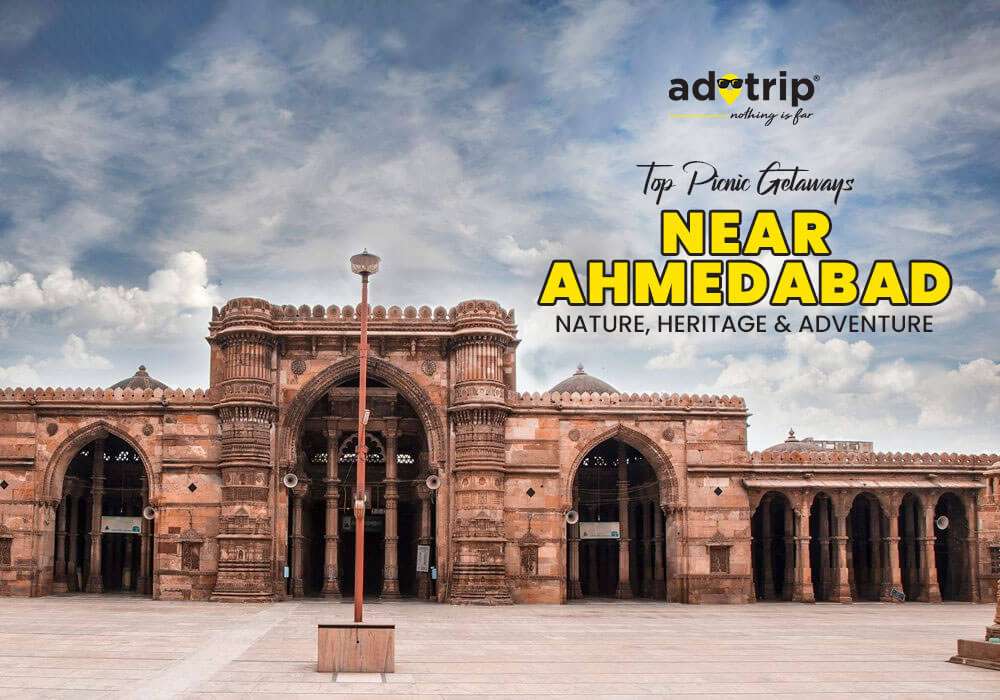


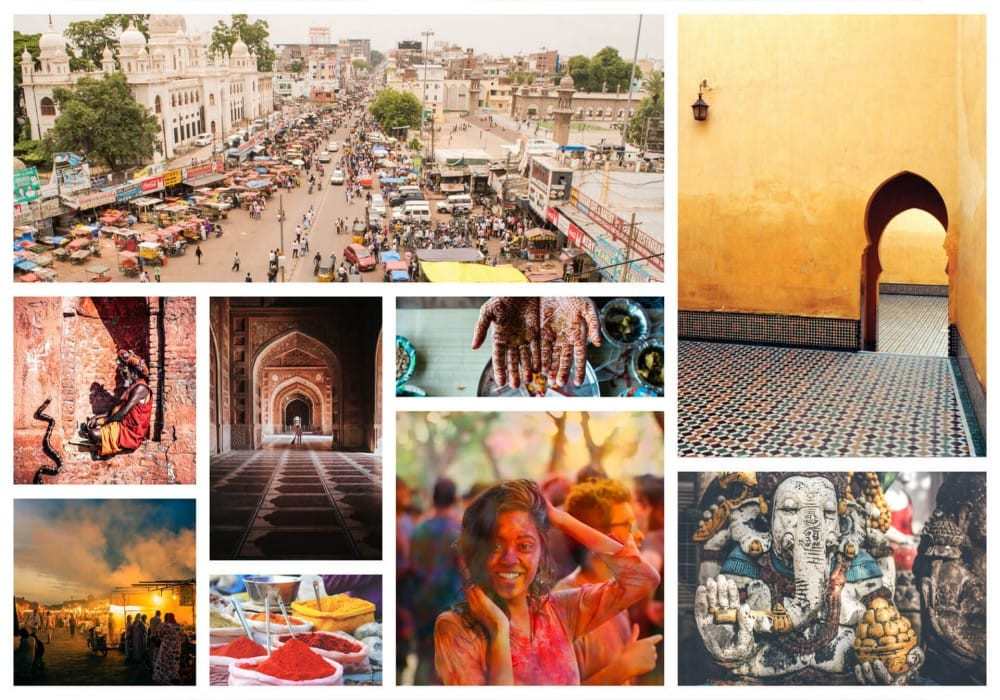



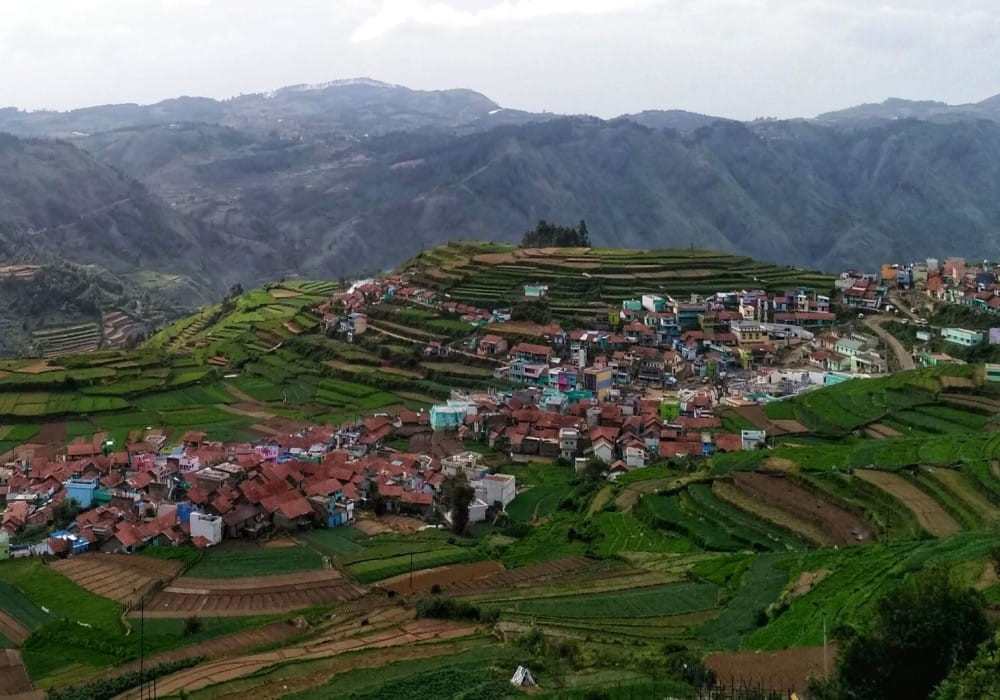
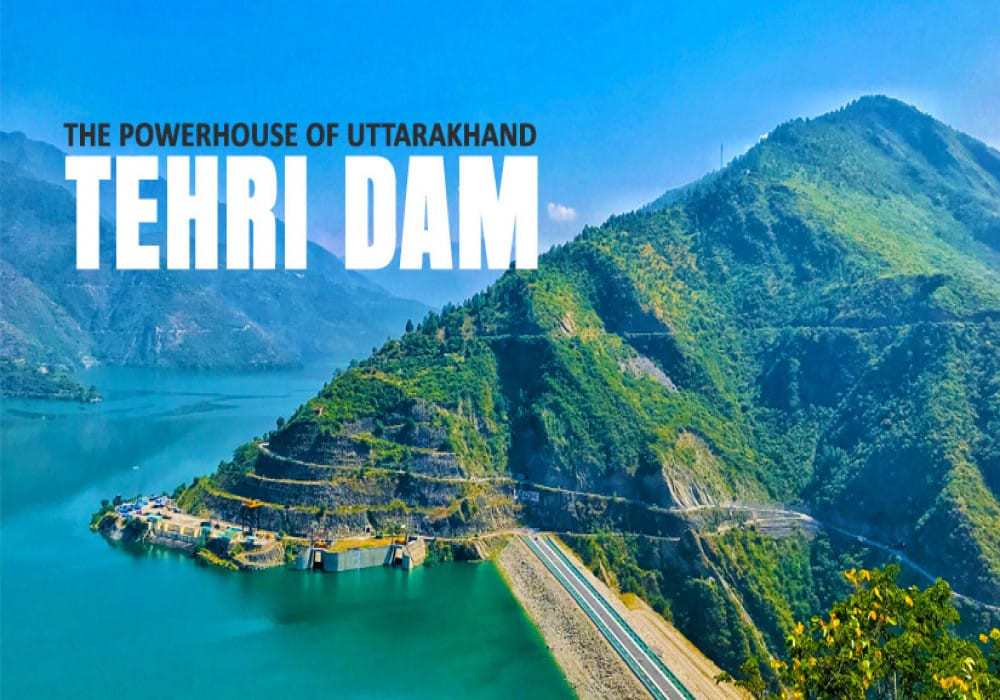
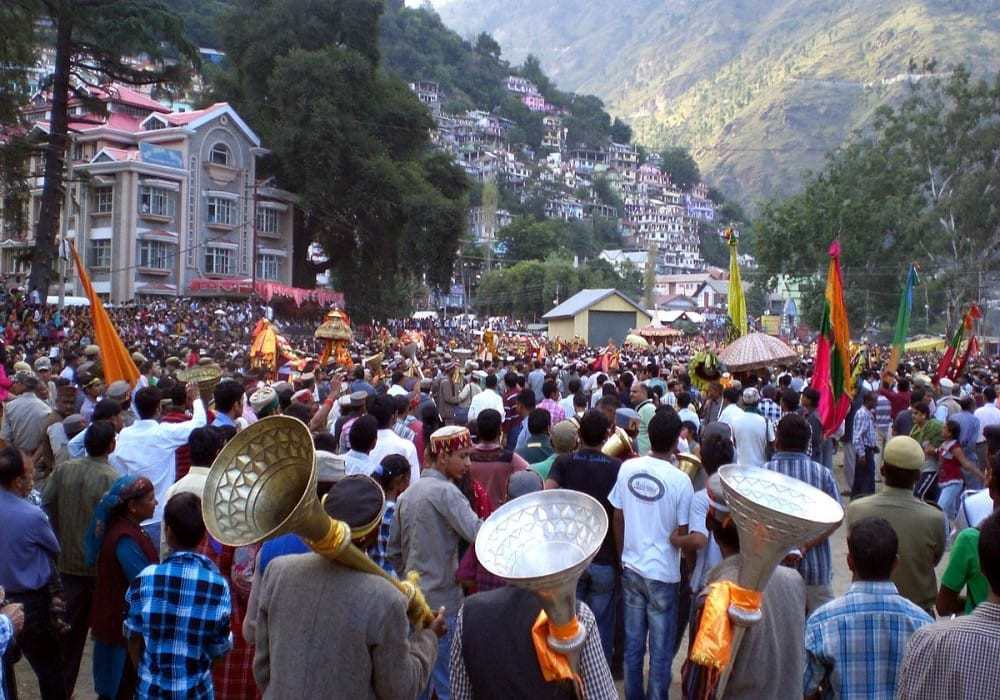


 Dubai
Dubai Malaysia
Malaysia USA
USA





